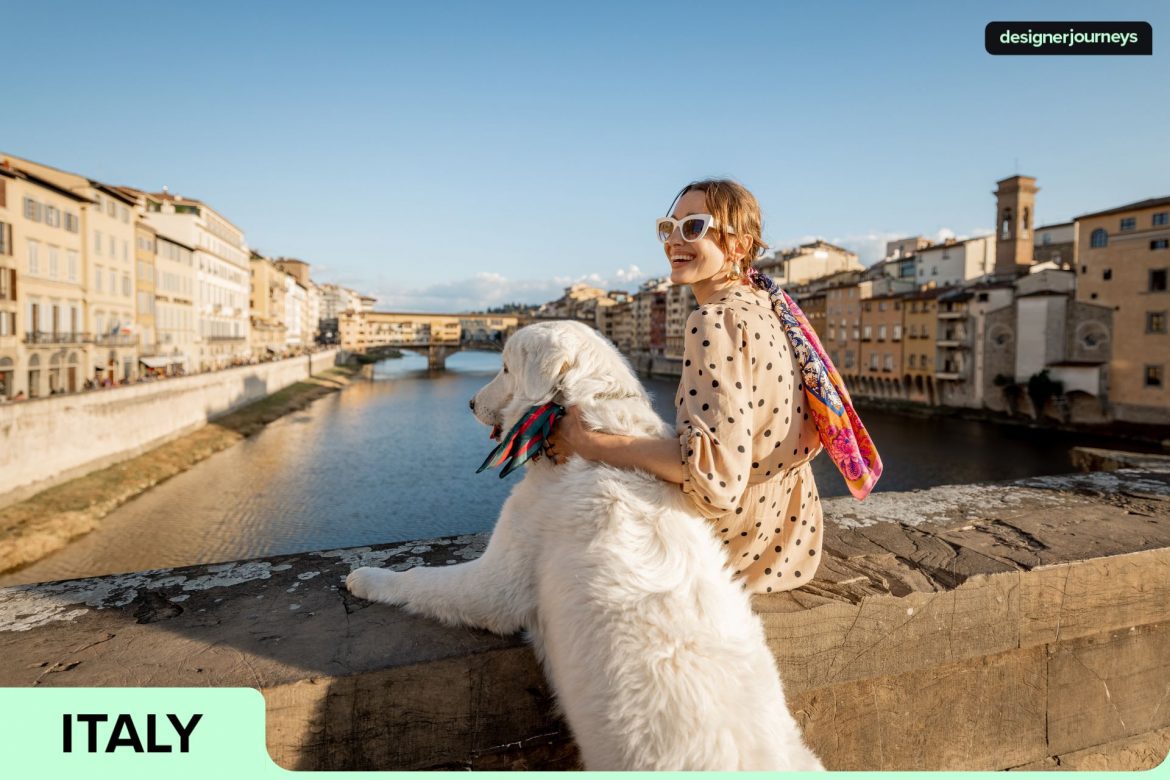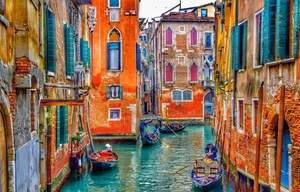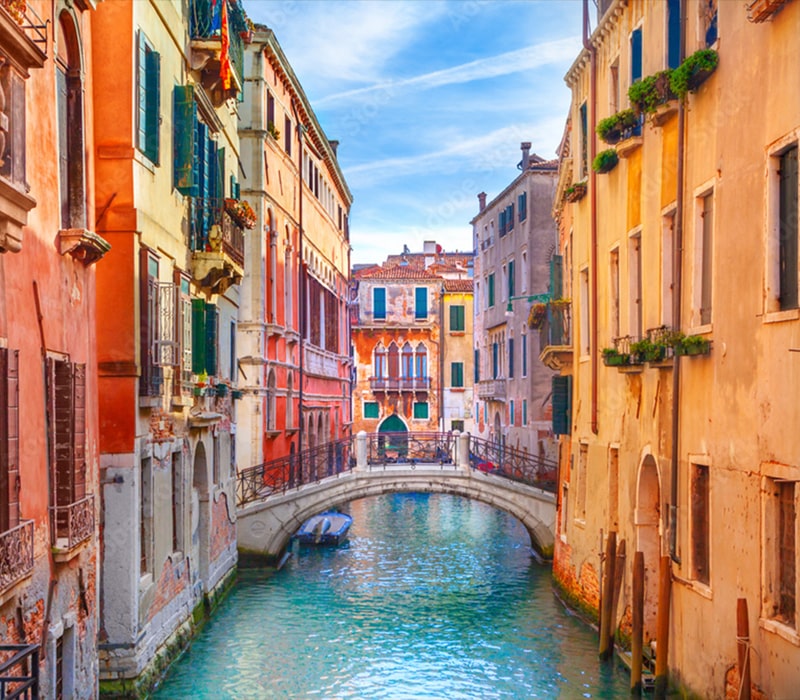Florence is more than a destination, it’s a living masterpiece. As you wander through this beautiful city, every cobblestone street whispers stories of the Renaissance, every piazza invites you to pause and absorb centuries of artistry, and every view reminds you why this Tuscan capital has captivated travellers for generations. Whether you’re planning your first Florence trip or dreaming of what awaits in this UNESCO World Heritage Site, discover how to design an unforgettable journey through one of Italy’s most enchanting cities.
Post Contents
Climb the Duomo for Panoramic Views
The Florence Cathedral, Santa Maria del Fiore, is the city’s crowning glory and focal point of Piazza del Duomo. Its terracotta dome, designed by Filippo Brunelleschi, dominates the skyline and remains an engineering marvel nearly six centuries after its completion.
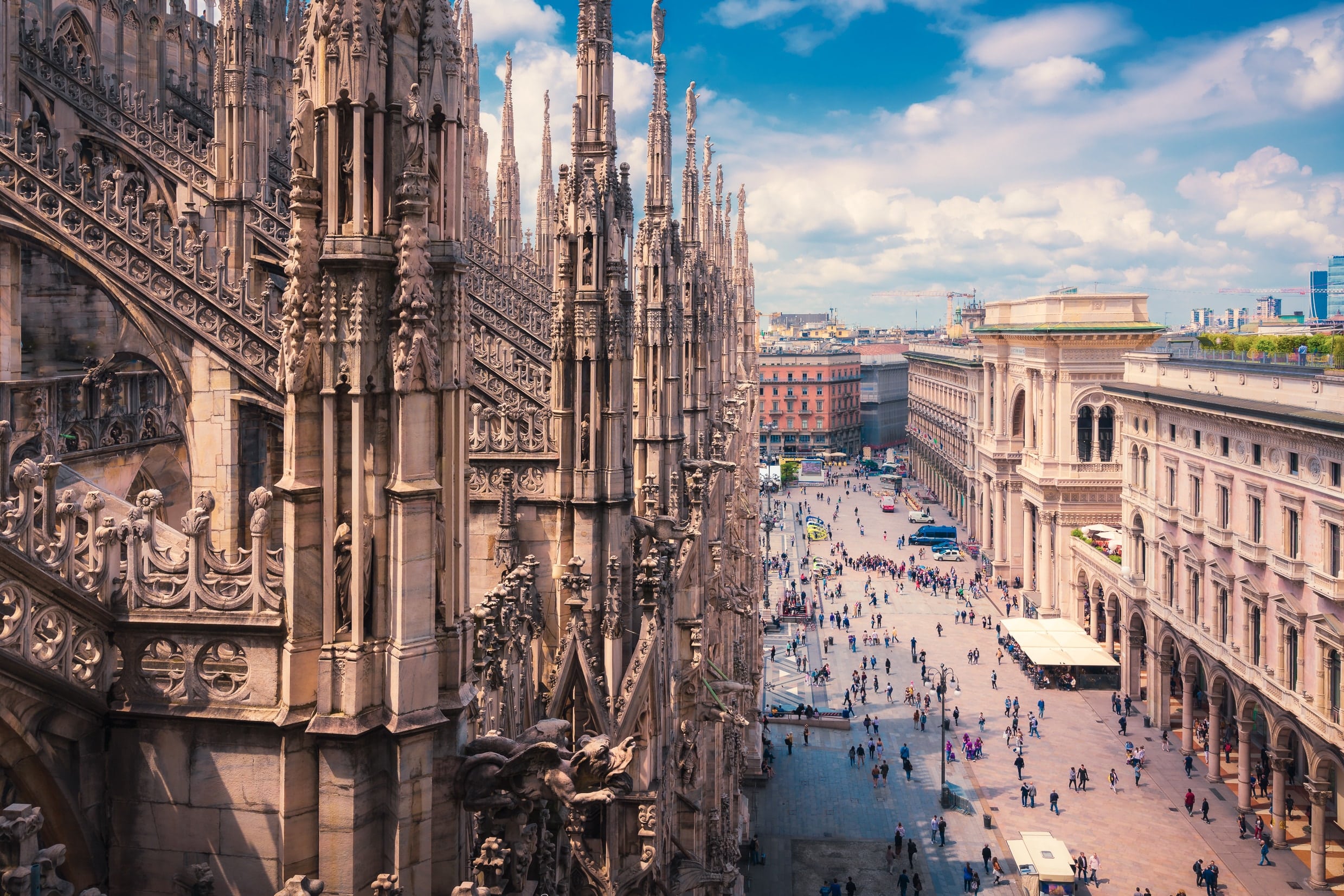
The Piazza del Duomo in Pisa is also known as the Piazza dei Miracoli (Square of Miracles).
The ascent involves 463 steps through a narrow passage between the dome’s inner and outer shells. As you climb, discover Giorgio Vasari’s dramatic frescoes of The Last Judgment up close. Upon reaching the top, you’ll be rewarded with sweeping 360-degree views across Florence’s rust-coloured rooftops, the Arno River winding through the beautiful city, and the Tuscan hills beyond.
Admire Michelangelo’s David at the Accademia Gallery
No visit to Florence is complete without standing before Michelangelo’s David at the Accademia Gallery. This 17-foot marble sculpture, carved from a single block of Carrara marble when the artist was just 26 years old, represents the pinnacle of Renaissance art. The statue’s anatomical precision and psychological depth are impossible to convey in photographs, you must experience it in person.
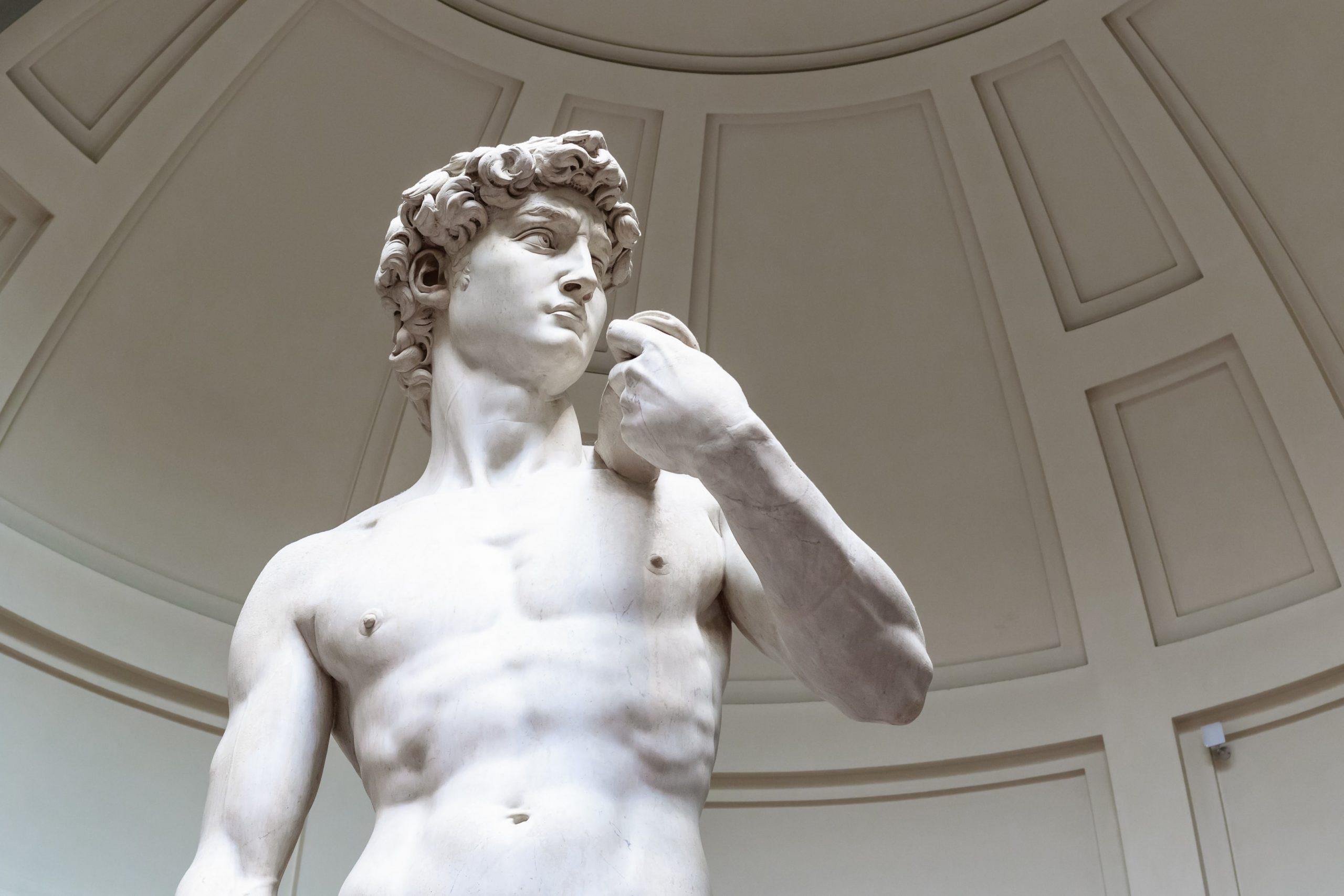
The statue is displayed in a custom-built space called the Tribune.
As you walk through the gallery, you’ll pass Michelangelo’s unfinished Prisoners before reaching David. Beyond this masterpiece, the museum houses Florentine paintings from the 13th to 16th centuries and historic musical instruments, including Stradivarius pieces.
Practical insight: Pre-booking timed entrance tickets with a specific time slot is essential when visiting Florence; walk-up visitors often wait 2-3 hours during the summer months. Standard admission is approximately €12-16, with additional booking fees. Visit the official museum website or work with a trusted tour operator for skip-the-line access to this must-see among the many museums in Florence.
Visit the Uffizi Gallery for Renaissance Masterpieces
The Uffizi Gallery houses the world’s finest collection of Renaissance art in a U-shaped Renaissance building commissioned by Cosimo I de’ Medici in 1560. Imagine walking through rooms filled with works by Leonardo da Vinci, Botticelli, Raphael, Caravaggio, and Titian, each masterpiece a landmark in art history and a testament to Florence’s rich history.

The Uffizi houses masterpieces by some of the most celebrated artists of the Renaissance.
Essential works include Botticelli’s The Birth of Venus and Primavera, Leonardo’s Annunciation, Michelangelo’s Doni Tondo, and Caravaggio’s Medusa. The gallery spans 50 rooms across two floors. Even a focused visit requires at least a few hours, plan for three to four to truly appreciate this treasure.
Practical insight: Book tickets at least two weeks in advance during peak tourist season. Visit during late afternoon (after 3 PM) when crowds thin, or on Tuesday evenings during summer months when the museum stays open until 10 PM. The Uffizi is located steps from Piazza della Signoria, with a separate entrance line for advance ticket holders.
Wander Piazza della Signoria and the Palazzo Vecchio
Piazza della Signoria has been Florence’s political heart and a famous square for seven centuries. This L-shaped square functions as an open-air sculpture gallery, with the Loggia dei Lanzi sheltering Renaissance and Classical statues, including Cellini’s Perseus and Giambologna’s Rape of the Sabine Women.
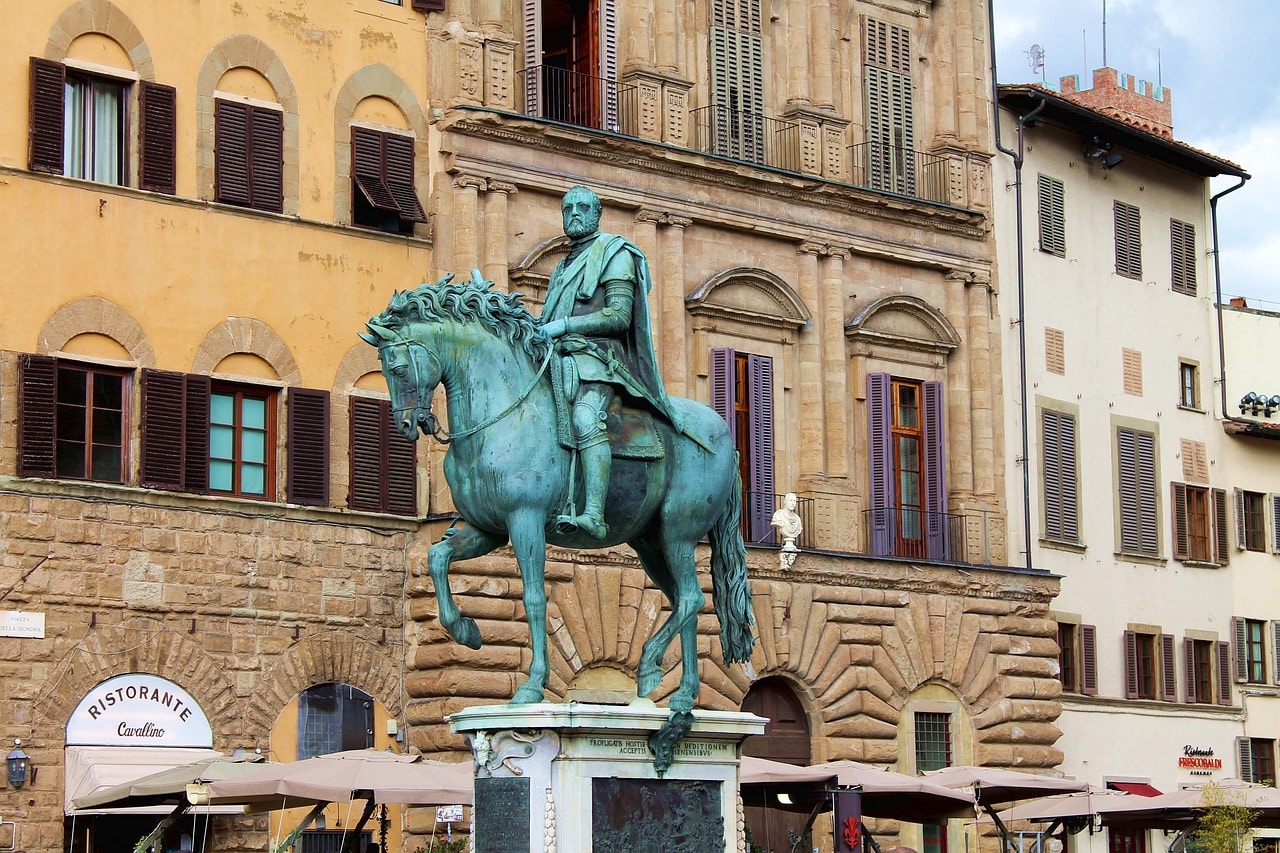
An adjacent 14th-century arcade that serves as an open-air sculpture gallery.
Palazzo Vecchio itself rewards exploration. This 13th-century palace served as Florence’s historic seat of power and features lavishly frescoed chambers and the spectacular Salone dei Cinquecento, a vast hall decorated by Vasari. The palazzo’s tower offers another exceptional viewpoint over the beautiful city at 94 meters tall, though be prepared for 418 steps.
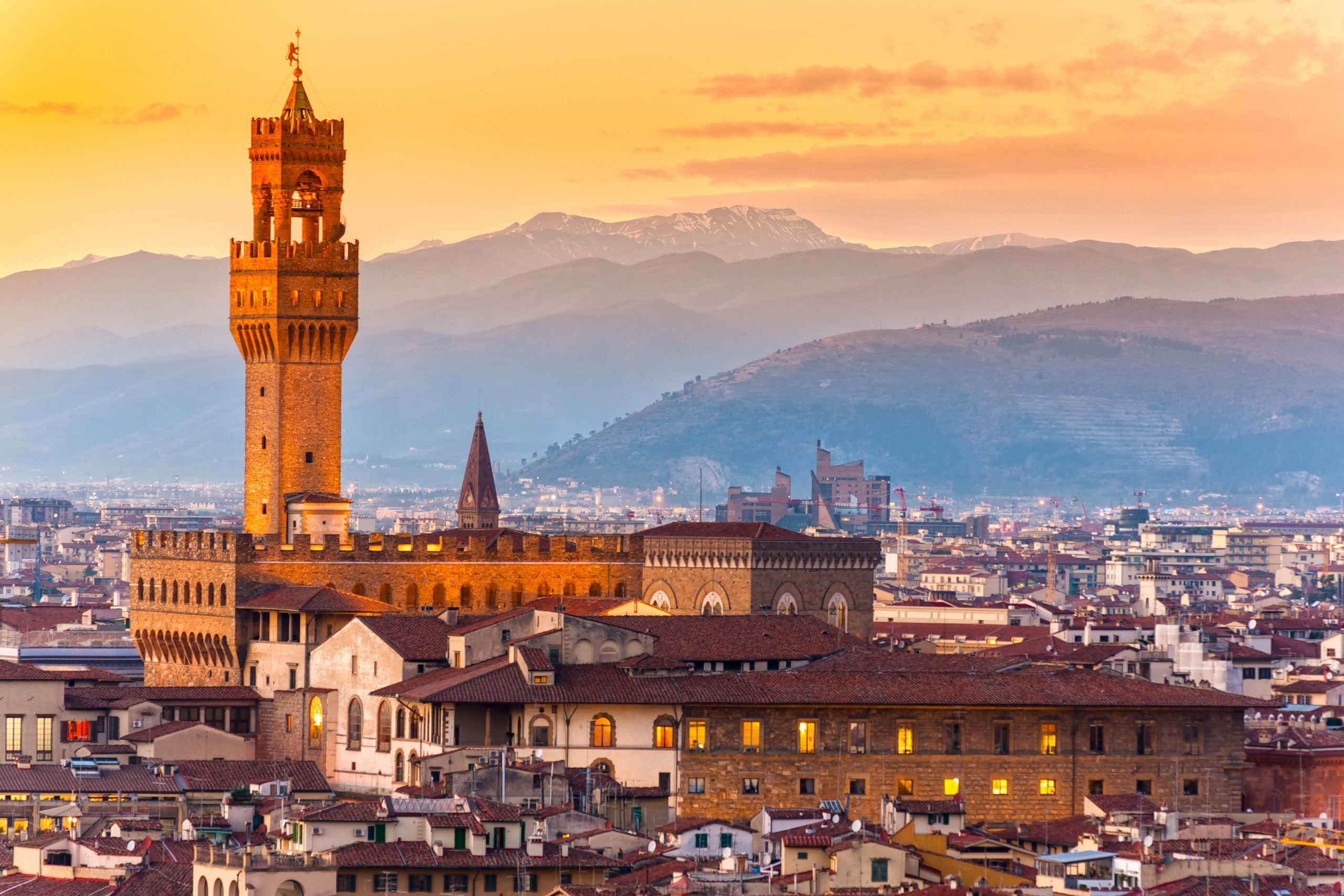
In front of the main entrance, you can see a copy of Michelangelo’s David.
Practical insight: Standard admission is approximately €12.50. The palazzo offers “Secret Passages” tours exploring hidden stairways and concealed rooms. Visit Piazza della Signoria in the early morning or evening when it’s less crowded and beautifully illuminated, this famous square transforms at night.
Explore Giotto’s Bell Tower and the Opera del Duomo Museum
Standing beside the Florence Cathedral, Giotto’s Bell Tower offers an alternative climb, 414 steps with viewing platforms along the way. The tower’s square design provides a different perspective, and from the top, you can photograph the Duomo di Firenze itself.
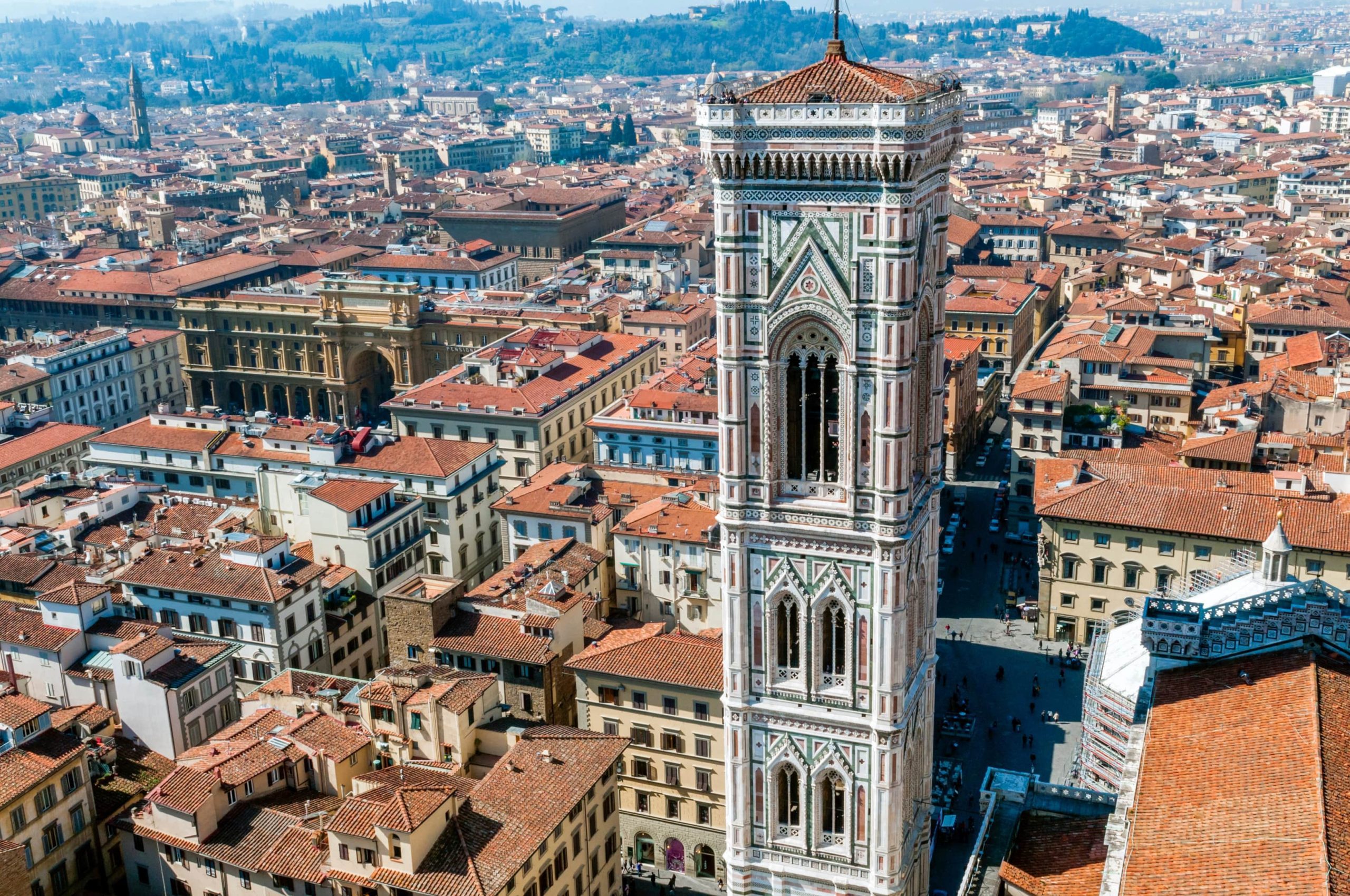
The upper levels also contain statues of Sibyls, Patriarchs, and Prophets in niches.
The Opera del Duomo Museum houses original artworks removed from the cathedral complex for preservation, including Lorenzo Ghiberti’s original Gates of Paradise bronze doors and Michelangelo’s unfinished Pietà. The museum includes a full-scale reconstruction of the Duomo’s original facade with sculptures in their intended positions, a breathtaking insight into the cathedral’s appearance during Dante’s lifetime.
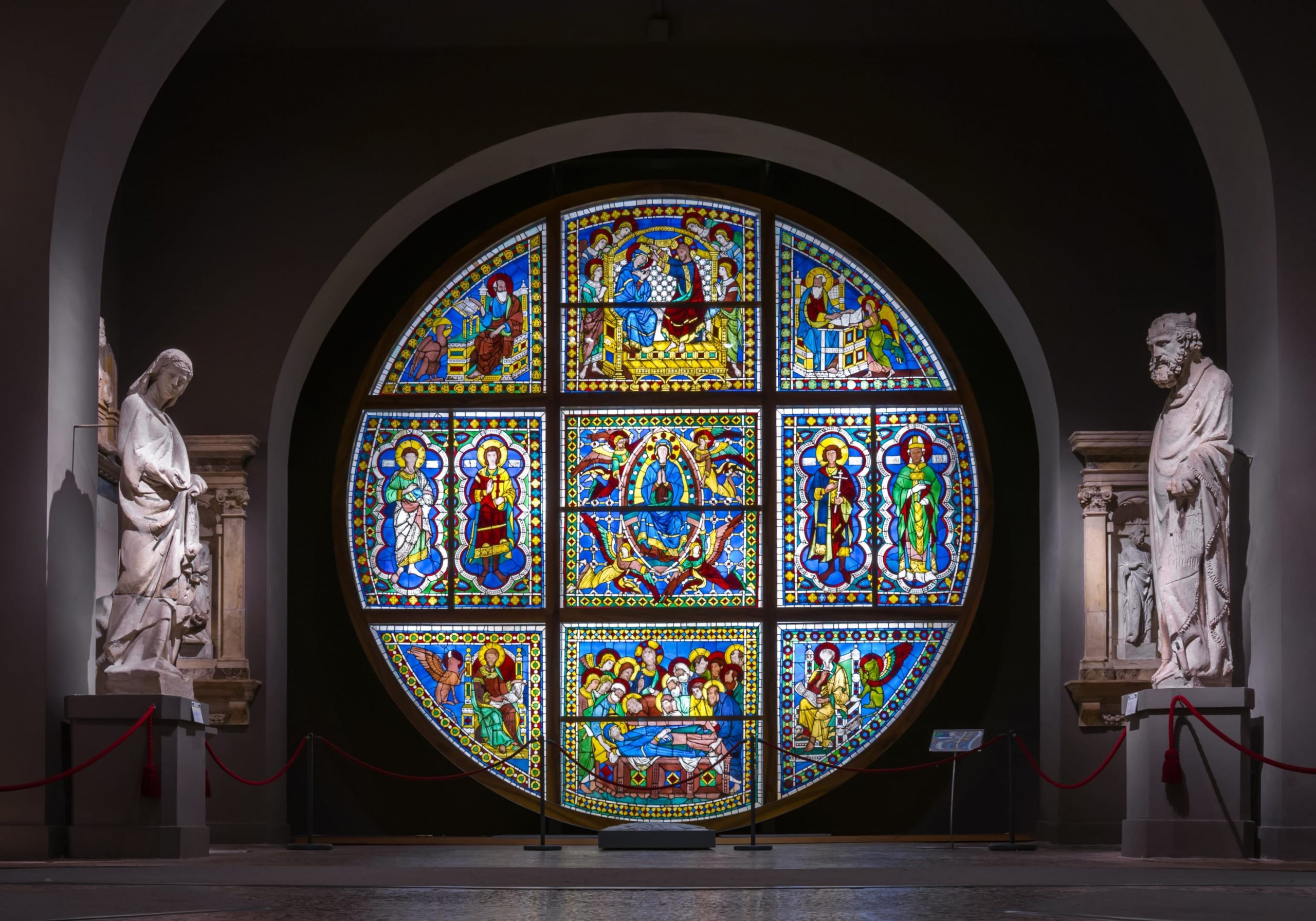
The upper levels also contain statues of Sibyls, Patriarchs, and Prophets in niches.
Practical insight: The Grande Museo del Duomo ticket (€30, valid 72 hours) covers all five monuments of the Duomo complex: the Florence Cathedral floor, Brunelleschi’s Dome, Giotto’s Bell Tower, the Baptistery, and the Opera Museum. Purchase your ticket in advance through the official website and collect it at the museum before visiting any monuments.
Visit Florence’s Iconic Churches & Basilicas
Beyond the Florence Cathedral, the city’s churches represent architectural jewels and repositories of artistic treasures, each telling stories of faith and Renaissance art.
Basilica di Santa Croce
The Basilica di Santa Croce, or Santa Croce, serves as Italy’s Temple of Fame. This ancient basilica is the final resting place of Michelangelo, Galileo, Machiavelli, and Rossini. This Franciscan basilica, the largest in the world, features frescoes by Giotto and Brunelleschi’s Pazzi Chapel. The piazza outside hosts the historic calcio storico football matches each June, a tradition with a rich history dating to the 16th century.
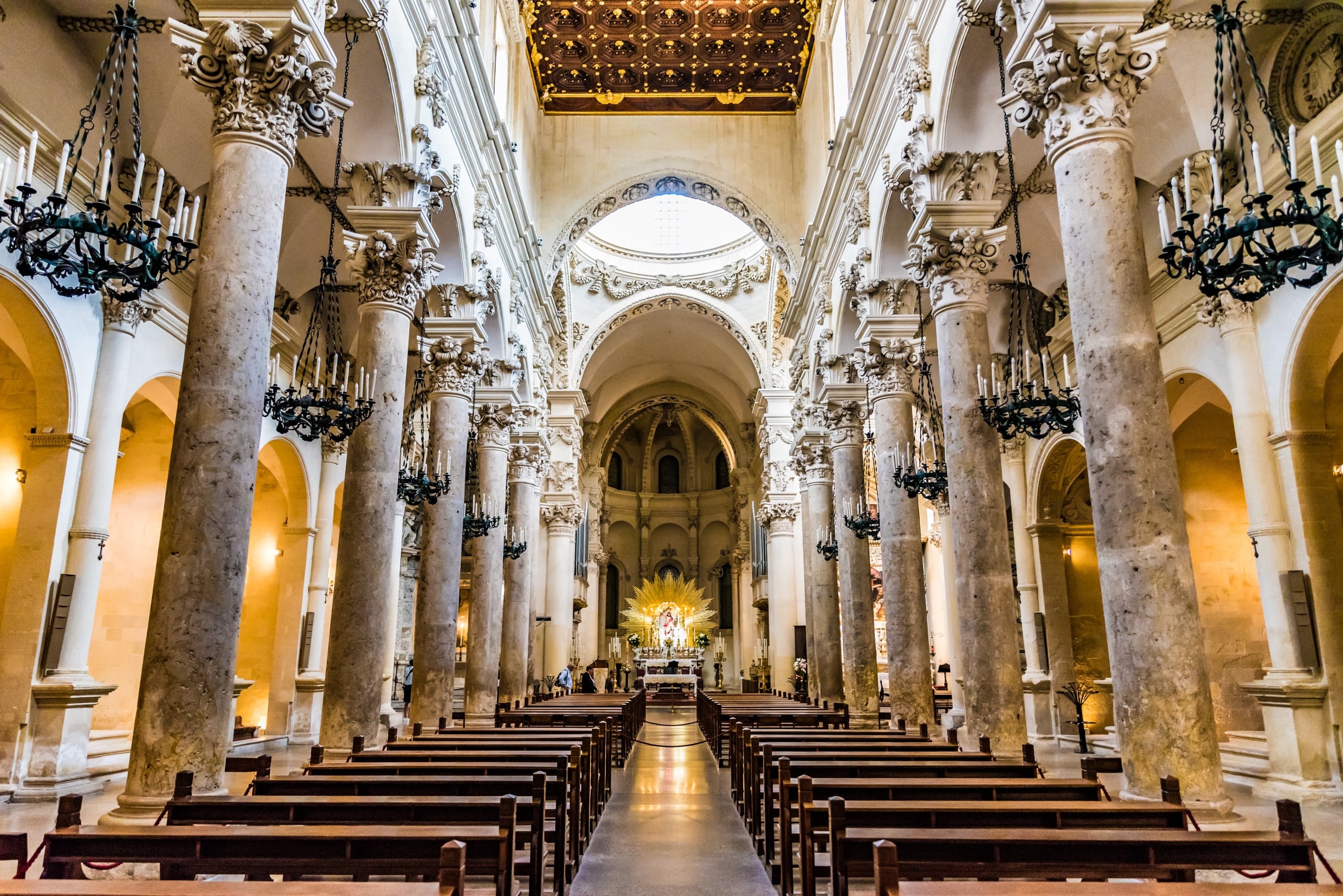
The basilica is most famous for serving as the final resting place for many illustrious Italians.
Practical insight: Admission costs approximately €8. The basilica is located about 15 minutes east of Piazza della Signoria in a neighbourhood with excellent restaurants and fewer tourists than the city centre.
Basilica di San Lorenzo and the Medici Chapels
The Basilica di San Lorenzo, or San Lorenzo, was the Medici family’s parish church, and their patronage transformed it into a showcase of Renaissance architecture. The adjacent Medici Chapels include Michelangelo’s New Sacristy, featuring his sculptures of Day, Night, Dawn, and Dusk on the Medici tombs. The Cappella dei Principi dazzles with semi-precious stone inlays, a testament to Medici power and wealth.

It was the parish church and mausoleum for the powerful Medici family.
Practical insight: The chapels cost approximately €9, with shorter queues than Florence’s major museums. The Basilica di San Lorenzo sits near Mercato Centrale and bustling markets, allowing you to combine art with culinary exploration and window shopping.
Santa Maria Novella
This Dominican church, Santa Maria Novella, sits steps from Florence’s main train station yet receives fewer visitors—making it a hidden gem. The beautiful facade by Leon Battista Alberti uses geometric patterns in green and white marble. Inside, discover Masaccio’s Trinity fresco—one of the first paintings using linear perspective correctly—plus works by Giotto, Brunelleschi, and Ghirlandaio.
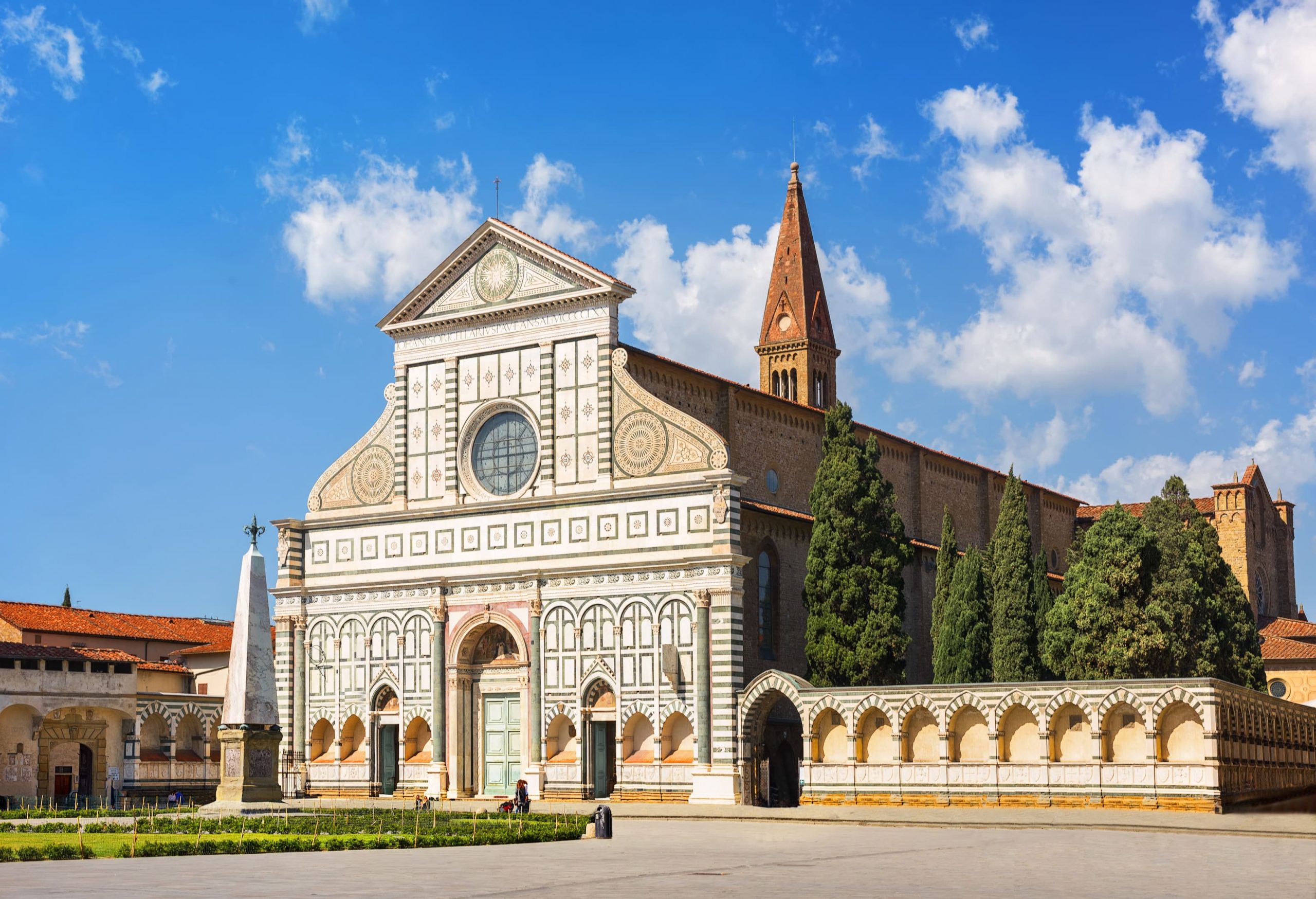
It features a blend of Gothic and Renaissance styles.
Practical insight: Admission costs approximately €7.50. Its location near the train station makes it ideal for early morning visits before exploring other cities or as a final stop before departing Florence.
San Giovanni Baptistery
The octagonal Baptistery of San Giovanni is one of Florence’s oldest religious buildings, dating to the 11th century. The building’s bronze doors include Ghiberti’s “Gates of Paradise,” deemed masterpieces by Michelangelo. Inside, golden Byzantine-style mosaics cover the entire dome. The Baptistery is included in the Grande Museo del Duomo ticket and forms part of the stunning Piazza del Duomo.
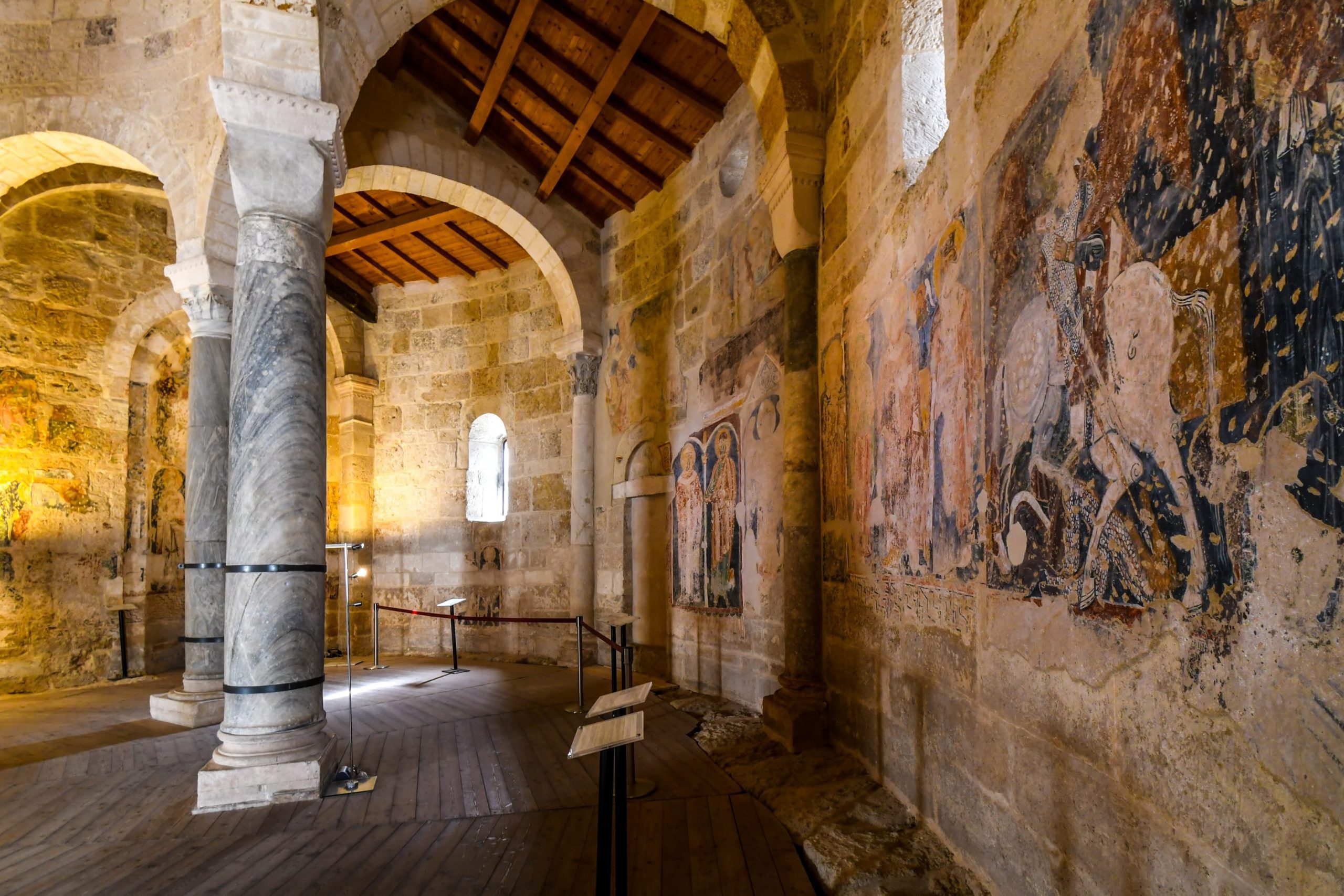
The baptistery is dedicated to St. John the Baptist, the patron saint of Florence.
Stroll Along the Arno River & Ponte Vecchio
The Arno River divides Florence into distinct characters, and the bridges connecting them provide some of the city’s most romantic experiences.
Cross the Ponte Vecchio
The Ponte Vecchio, meaning “old bridge”, is Florence’s most photographed landmark after the Duomo. This medieval stone bridge, the only bridge in Florence to survive World War II intact, has spanned the Arno River since 1345. The bridge is lined with jewellery stores overhanging the water, displaying exquisite gold and silverwork—perfect for luxury purchases or window shopping.
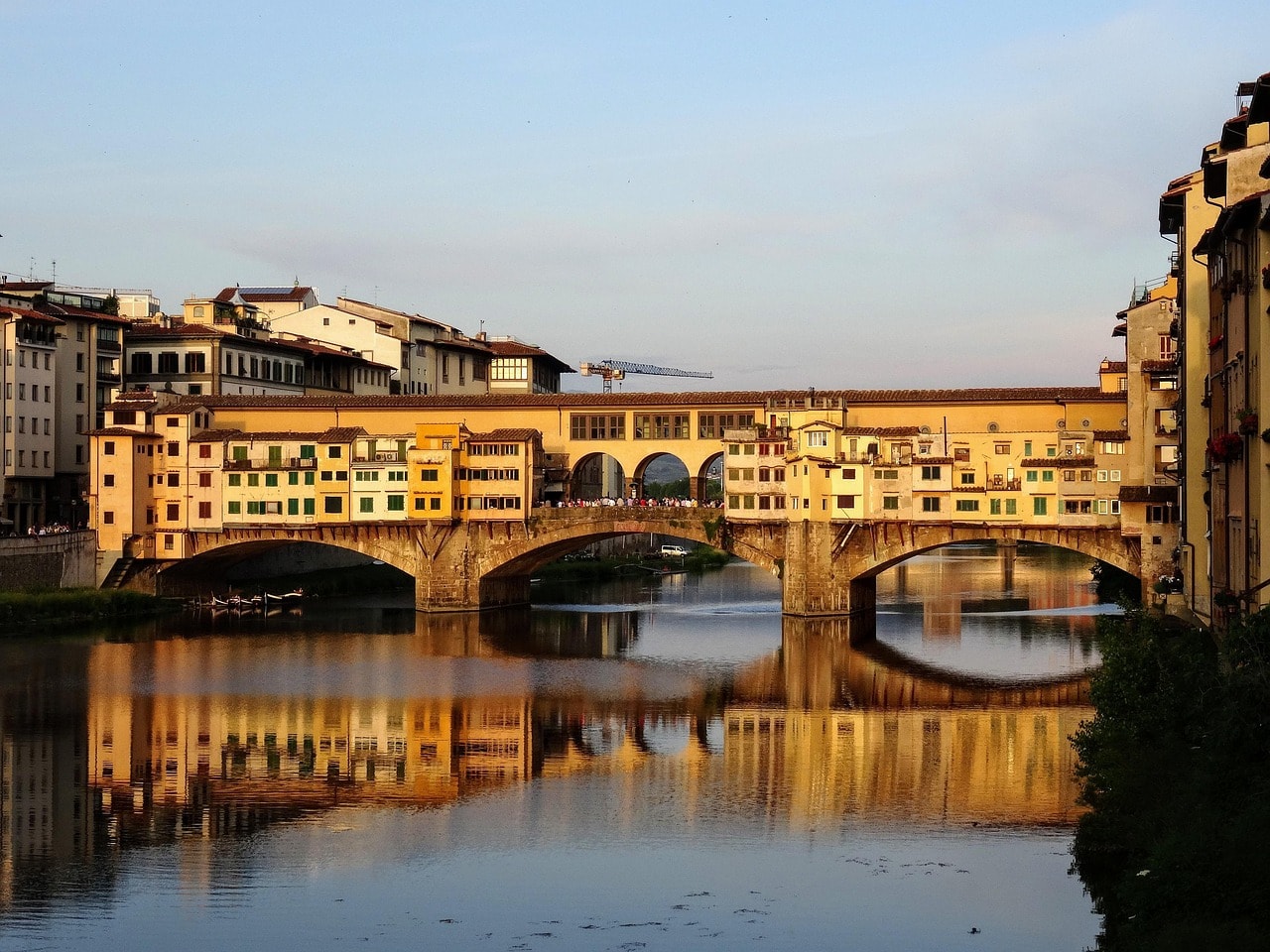
The bridge is now closed to vehicular traffic and is a pedestrian-only route.
At the centre of the bridge, a small piazza opens on both sides, offering views up and down the Arno River. This is where street musicians often perform and where sunset photographers gather for golden hour shots.
Practical insight: Visit Ponte Vecchio early in the morning or late in the evening to avoid daytime crowds. For the classic postcard view of the old bridge itself, walk to Ponte Santa Trinita upstream—sunset light creates particularly beautiful photographs during golden hour.
Enjoy Sunset Views and Piazzale Michelangelo
The lungarnos, riverside promenades running along the Arno River, provide pleasant walking along both banks. These tree-lined paths allow you to escape the dense city centre while experiencing the beautiful city’s riverside charm.

Watching the sun set from here is described as a beautiful and spectacular experience.
For the ultimate Florence sunset, climb to Piazzale Michelangelo on the Oltrarno hillside. This terrace provides the iconic panoramic view, the entire skyline with the Duomo di Firenze, Palazzo Vecchio, and surrounding Tuscan hills perfectly framed during golden hour.
Practical insight: Access Piazzale Michelangelo by bus (lines 12 and 13 from the city centre), taxi, or a steep 20-minute walk from Ponte Vecchio through narrow streets. Arrive 30-45 minutes before sunset to secure viewing spots during peak tourist season. For an even more intimate experience, continue to San Miniato al Monte basilica with equally spectacular views and fewer crowds.
Wander the Oltrarno Artisan Quarter
The Oltrarno neighbourhood, particularly around Piazza Santo Spirito, remains Florence’s artisan heart. Traditional crafts continue in workshops along narrow streets, and leatherworkers, framemakers, furniture restorers, and goldsmiths practice trades passed down through generations.
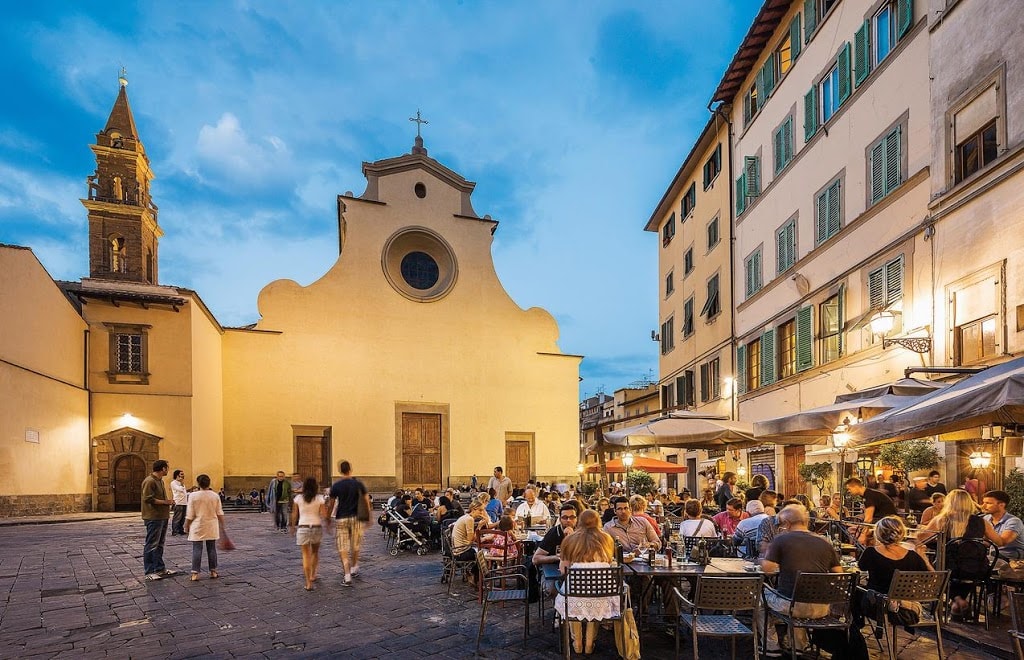
The narrow streets are home to skilled masters of various trades.
Via Santo Spirito and the surrounding streets in the Santo Spirito area offer family-run restaurants, vintage shops, and artisan botteghe where craftspeople work in full view. This neighbourhood maintains an authentic character increasingly rare in tourist-heavy areas.
Practical insight: Dedicate a few hours to wandering the Oltrarno without an agenda. For unique souvenirs created by local artisans rather than mass-produced items, this hidden gem neighbourhood offers Florence’s best shopping opportunities beyond the jewellery stores of Ponte Vecchio.
Discover Palaces & Gardens
Florence’s palaces and gardens provide respite from the many museums while revealing the lifestyle of Renaissance dynasties and the powerful Medici family.
Explore the Pitti Palace
The Pitti Palace, or Palazzo Pitti, is Florence’s largest palazzo, a massive Renaissance structure that housed the Medici family, the Lorraine, and the Savoy dynasties. Today, it contains five museums, creating an experience distinct from the Uffizi’s focused art collection.
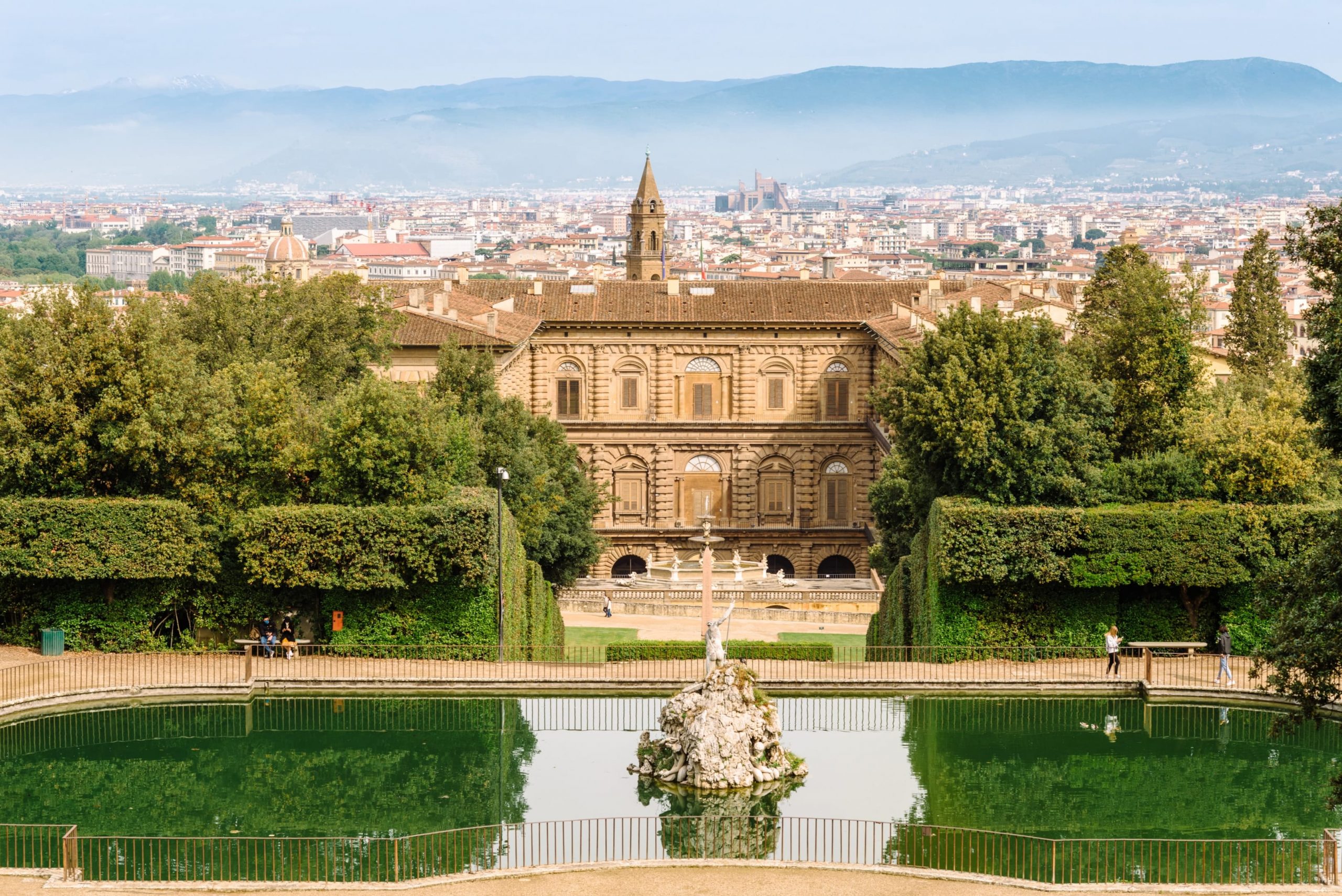
The core of the palace was originally commissioned in 1458 by Luca Pitti.
The Palatine Gallery displays masterpieces by Raphael, Titian, Rubens, and Caravaggio in lavishly frescoed royal apartments. The Royal Apartments preserve original furnishings, while other museums cover modern art, costume, and decorative arts, all showcasing the Medici family’s rich history and patronage.
Practical insight: Full exploration requires at least a few hours. The Palatine Gallery and Royal Apartments cost €16. The palace offers a quieter museum experience than the Uffizi. From the old bridge Ponte Vecchio, it’s a 5-minute walk through the Oltrarno, easy to reach from the city centre.
Stroll Through the Boboli Gardens
Behind the Pitti Palace unfold the Boboli Gardens, 45 hectares of Renaissance landscape architecture and the ultimate Italian garden. These gardens cascade up the hillside into the Tuscan hills, offering grottos, fountains, geometric hedges, ancient sculptures, and an Egyptian obelisk. Multiple terraces provide sweeping views across the beautiful city.

The gardens were first opened to the public in 1766.
Practical insight: Allow at least 90 minutes for leisurely visits. Entry costs approximately €10 (€6 in winter). Wear comfortable shoes, as the Italian garden features hills and uneven paths. Visit mid-afternoon during hot summer months for welcome shade, then continue to Piazzale Michelangelo for sunset views.
Savour Tuscan Cuisine & Local Produce
When visiting Florence, the city’s culinary traditions celebrate simplicity, exceptional local produce and ingredients prepared with care. Great food is central to the Florence experience.
Taste Bistecca alla Fiorentina
The iconic bistecca alla fiorentina is a carnivore’s dream, a massive T-bone from Chianina cattle, aged 2-3 weeks, seasoned simply with salt, pepper, and olive oil, then grilled over wood to rare or medium-rare perfection. Portions typically weigh 800 grams to 1.5 kilograms, making this a dish for sharing during your Florence trip.
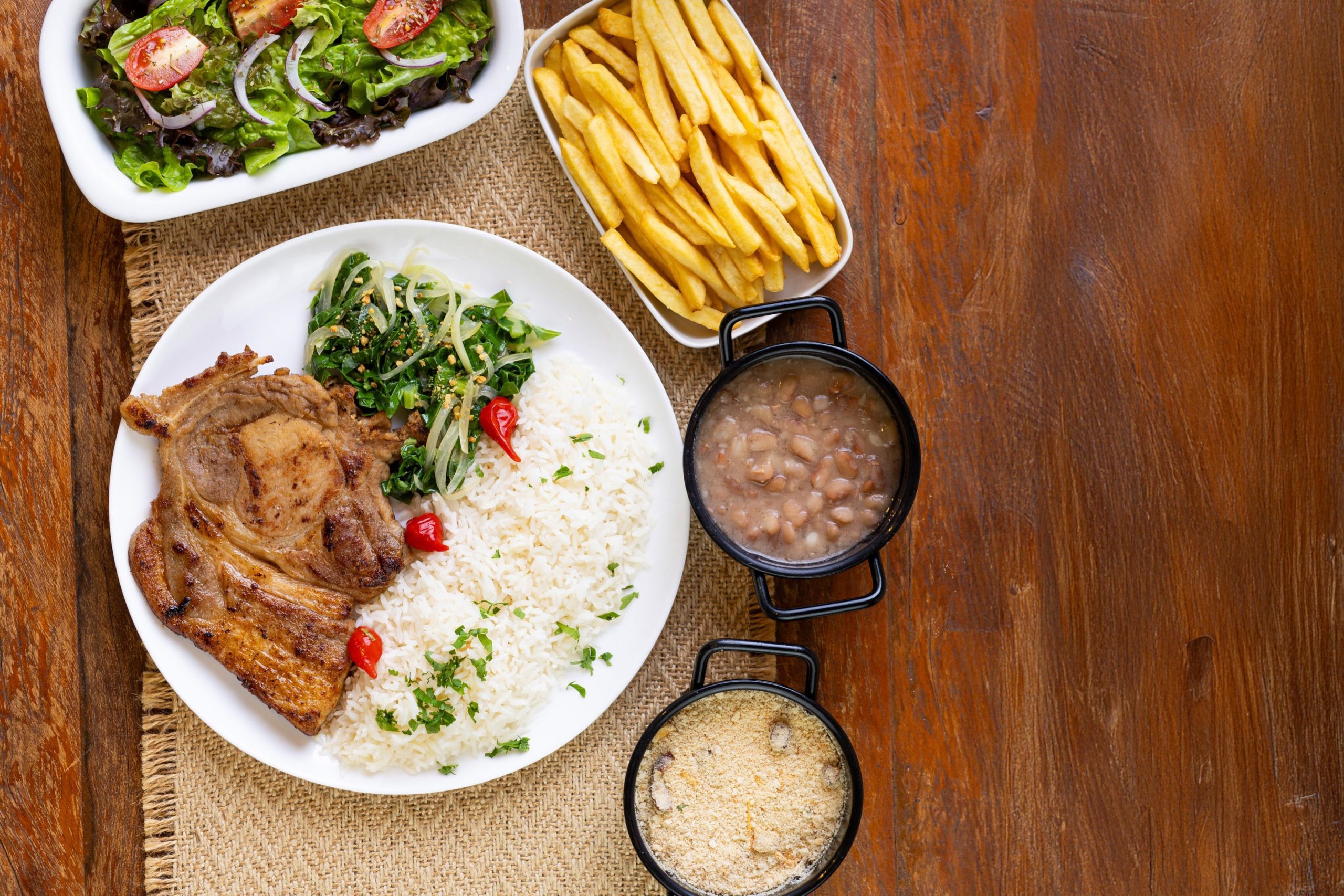
The steak is cooked on a grill (traditionally over hot embers or charcoal).
Pair your bistecca with Tuscan sides, white beans with olive oil, roasted potatoes, grilled vegetables—and Chianti Classico, one of the region’s finest Tuscan wines.
Where to experience it: Perseus, Trattoria Sostanza, and Il Latini serve exceptional bistecca alla fiorentina and are trusted favourites for great food. Reservations are essential during peak tourist season. Expect to pay €45-60 per kilogram (€60-100 for a typical bistecca serving two).
Join a Florence Food Tour
Guided food tours offer efficient discovery of Florence’s culinary traditions and local produce. Quality tours combine visits to bustling markets, traditional shops, and tastings including Tuscan salumi and cheeses, lampredotto (tripe sandwich), fresh pasta, gelato, Tuscan wine, and extra virgin olive oil.
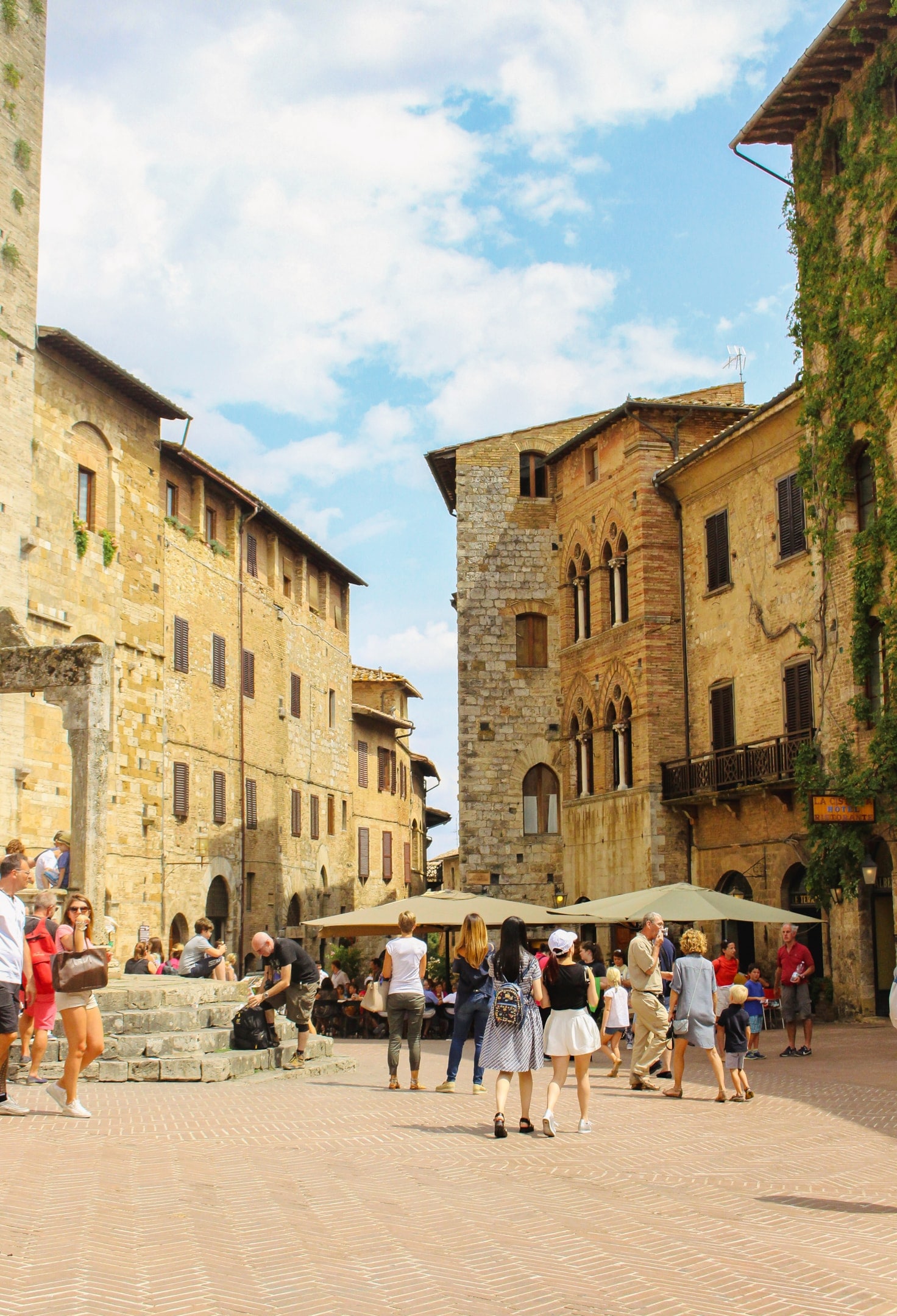
Food tours in Florence typically feature a variety of traditional Florentine and Tuscan dishes.
Expert guides share stories about food culture, explain where to find local produce at bustling markets, and recommend establishments for independent visits, essential insider knowledge when visiting Florence.
Practical insight: Book food tours for your first full day, the local knowledge enhances the rest of your Florence trip. Morning tours offer the freshest market produce at the bustling markets. Quality tours cost €75-120 per person for 3-4 hours, with excellent value for discovering great food.
Discover Florence’s Wine Windows (Buchette del Vino)
Among the most charming things to do in Florence is discovering the wine windows—Florence’s wine windows, or buchette del vino, are small arched openings in palace walls where wine producers once could serve wine directly through the opening, avoiding tavern taxes. During the 1630 plague, they enabled contact-free service. After centuries of disuse, many wine windows function again to serve wine through these historic openings.
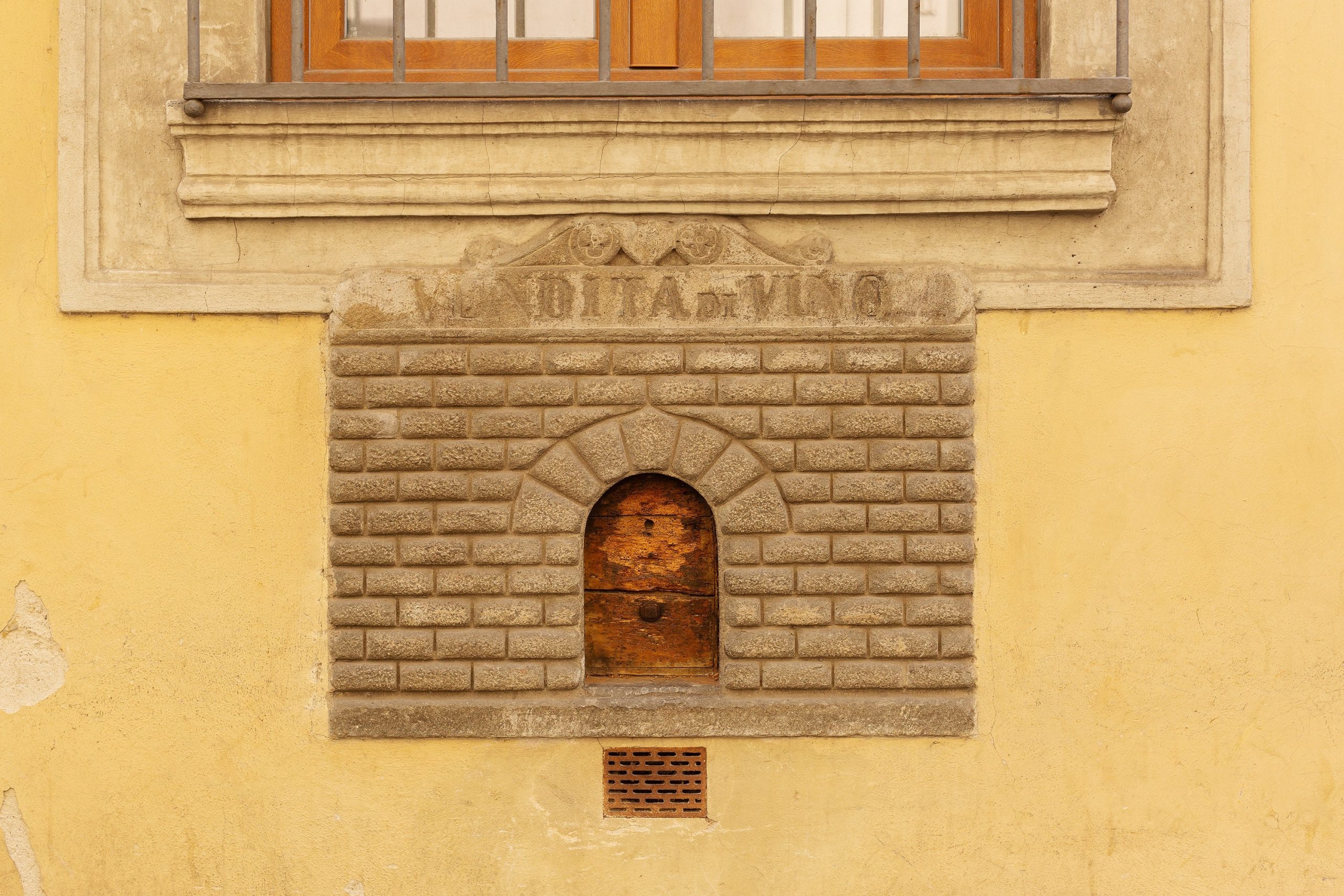
They served as an anti-contagion method during the Bubonic Plague epidemic in the 1600s.
Where to find them: Active wine windows include those at Vivoli Il Gelato and Babae in the Santo Spirito neighbourhood. Download the wine windows map from the Buchette del Vino Association website—these hidden gems add a unique dimension to your Florence trip.
Visit Mercato Centrale
The Central Market, Mercato Centrale, has supplied Florentines with fresh local produce since 1874. Among the bustling markets in the city centre, this is the most famous. The ground floor operates as a traditional market with vendors selling fruits, vegetables, meats, cheeses, olive oil, and speciality items.
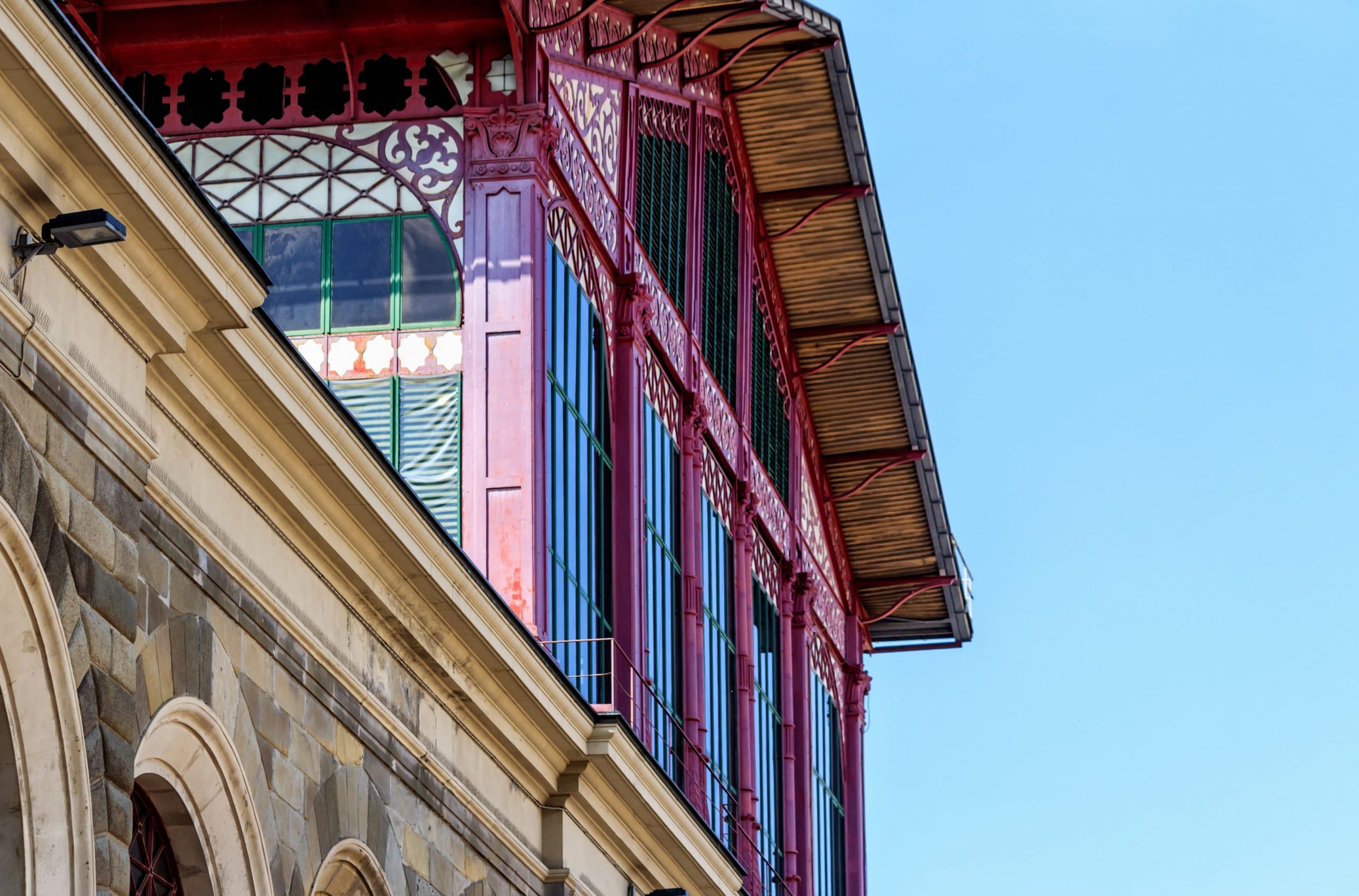
The structure combines iron and brickwork, inspired by the Parisian Halles.
The upstairs food hall brings together quality vendors offering fresh pasta, pizza, seafood, truffles, and traditional Tuscan dishes, including bistecca alla fiorentina, all showcasing great food from the Tuscan capital.
Practical insight: The ground floor market operates Monday-Saturday 7:00 AM to 2:00 PM—visit mid-morning when bustling markets are most vibrant. The upstairs food hall stays open until late evening. Don’t miss vendors selling local produce and olive oil. For the most authentic experience, visit Mercato Sant’Ambrogio in Santa Croce, a smaller but frequented market by locals seeking fresh local produce.
Day Trips & Countryside Escapes
The Tuscan capital’s location makes it ideal for exploring the Tuscan countryside, medieval hill towns, and wine regions in the rolling Tuscan hills.
San Gimignano Day Trip
A day trip to San Gimignano reveals a medieval gem rising from the Tuscan hills with 14 stone towers creating an unmistakable skyline. This UNESCO World Heritage Site preserves its medieval character remarkably well. Climb the Torre Grossa for sweeping views across the rolling Tuscan hills, visit the Collegiata for exceptional frescoes, and shop for local saffron and Vernaccia, a distinctive Tuscan wine.
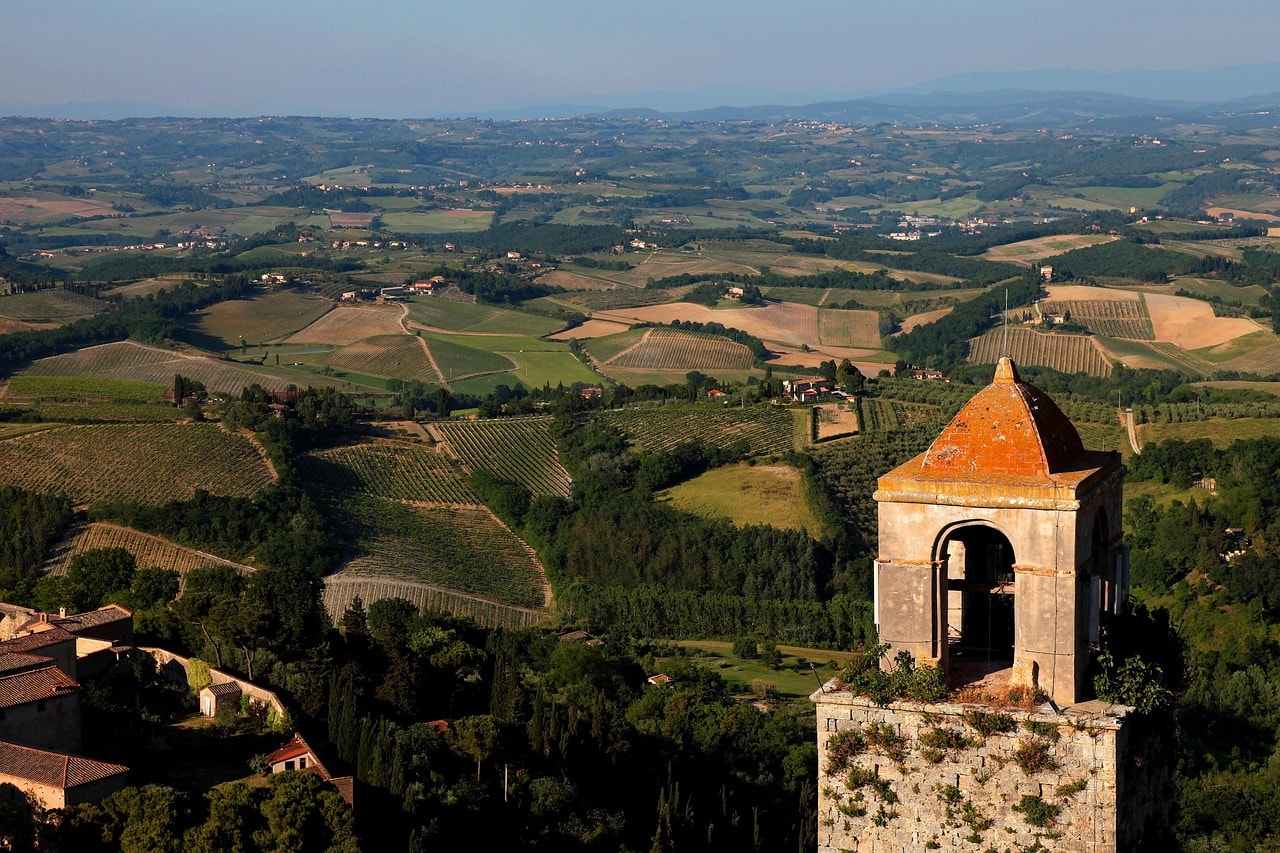
Home to the town’s cathedral, the Duomo di San Gimignano, and the Palazzo Comunale.
Practical insight: Located 60 kilometres southwest of Florence, Italy, the drive takes 90 minutes through beautiful Tuscan countryside. Public transport combines train (to Poggibonsi from the train station) and bus (about 2 hours total). Arrive before 10:00 AM or after 3:00 PM to avoid day trip crowds during peak tourist season. Consider combining San Gimignano with Siena (45 minutes south) or Chianti wineries for a full-day trip exploring the Tuscan capital’s surroundings.
Pisa and the Leaning Tower Day Trip
A day trip to Pisa reveals the famous leaning tower forming part of the stunning Piazza dei Miracoli, a UNESCO World Heritage Site featuring the cathedral, baptistery, and Camposanto cemetery—all remarkable Romanesque architecture clad in white marble.
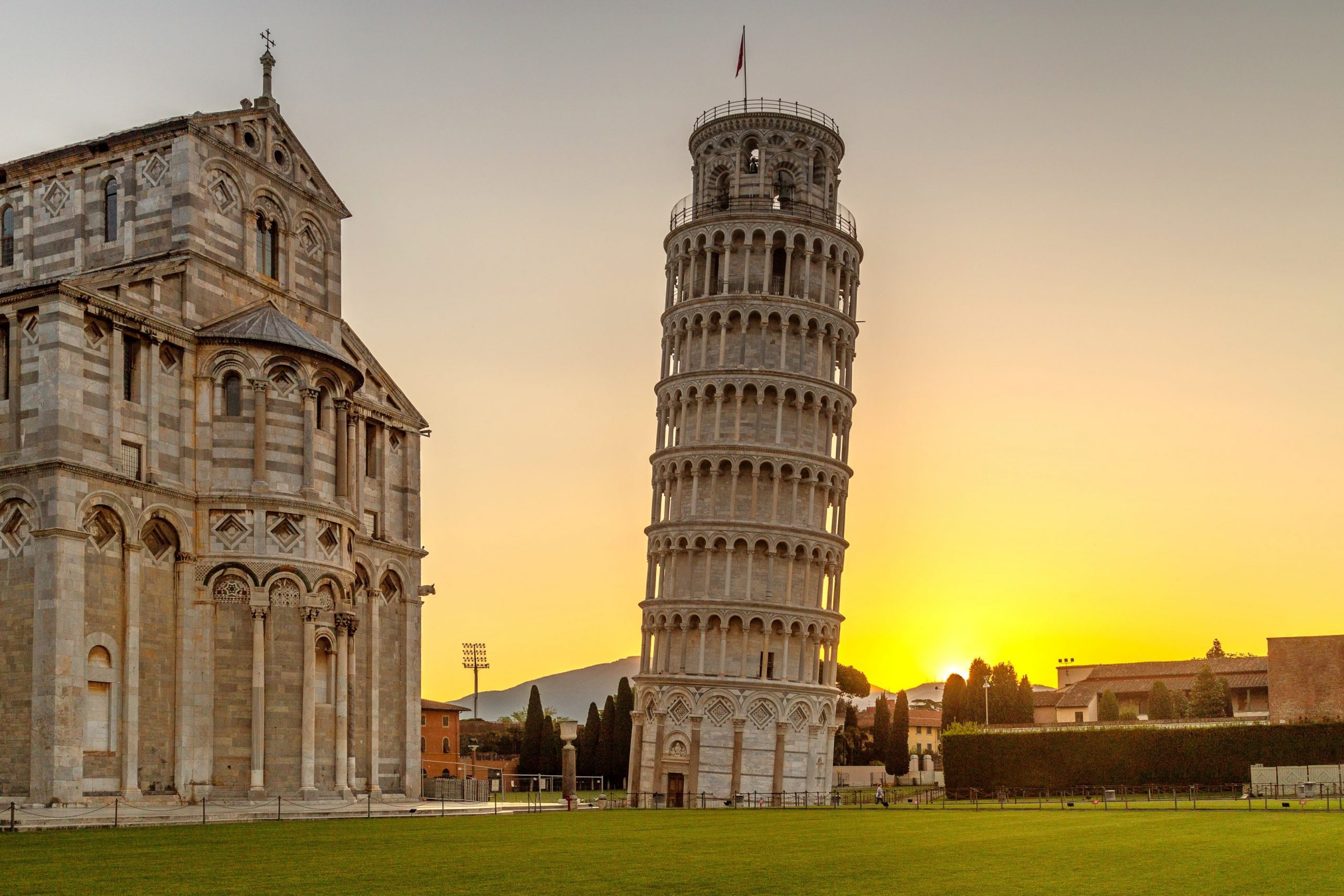
The tower is the campanile, or freestanding bell tower, for the adjacent Pisa Cathedral.
Book climbing tickets for the leaning tower in advance (approximately €20) with a specific time slot. Pisa is 90 kilometres west of Florence, Italy, about one hour by train from the train station or car. Visit early morning or late afternoon when fewer day-trip crowds arrive from other cities.
Drive Through the Tuscan Countryside
The Tuscan countryside between Florence and Siena defines the romantic Italian landscape—rolling Tuscan hills planted with vineyards producing Tuscan wine and olive groves yielding olive oil, cypress-lined roads, medieval villages, and Renaissance villas. The Chianti region offers numerous wineries welcoming visitors for tastings of local wines and olive oil.
A famous cluster of cypress trees that is an iconic symbol of the region.
Practical insight: Renting a car from Florence Airport or the city centre provides the freedom to explore at your own pace, stopping at hilltop towns like Greve in Chianti, Castellina, and Radda. Alternatively, join organised wine tours with expert guides and transportation included (€100-150 per person) to sample Tuscan wine and olive oil in the rolling Tuscan hills—perfect for a solo trip or couples.
Practical Information & Travel Tips
Getting Around Florence
This walkable city is exceptionally easy to explore on foot—most major attractions lie within the compact city, easily covered by walking through narrow streets and famous squares. The historic centre’s pedestrian zones make walking not just practical but pleasant when visiting Florence.
- Public transportation: ATAF buses serve areas outside the centro storico, including Piazzale Michelangelo and Fiesole. Purchase tickets at tabacchi shops, newsstands, or ticket machines before boarding (€1.50 for 90 minutes). Validate your paper ticket when boarding.
- Taxis: Available at taxi stands near the famous square, Piazza della Signoria, and train station, or by phone/app. Expect €10-15 for most in-city trips. Taxis to/from Florence Airport (Amerigo Vespucci) cost approximately €25-30 with fixed rates available.
- Train station: Florence’s main train station, Santa Maria Novella (SMN), connects seamlessly to Rome (90 minutes by high-speed train), Venice (2 hours), Milan (2 hours), and other Tuscan cities. The train station sits at the northwestern edge of the city—a 10-minute walk through narrow streets to the Duomo di Firenze.
When to Visit Florence
- Peak tourist season (May-September): Warm weather and long days during summer months, but expect crowds at the many museums and higher prices. Pre-booking with specific time slots becomes essential for museums and popular restaurants. Summer temperatures often exceed 30°C (86°F).
- Shoulder season (April, October): Ideal conditions for visiting Florence—pleasant weather, smaller crowds, and lower prices. April brings blooming wisteria in Italian gardens throughout the beautiful city.
- Winter (November-March): Fewest tourists and lowest prices, though some attractions have reduced hours. The weather ranges from cool to cold with occasional rain. The many museums remain open, and the experience of the Renaissance city feels more intimate—ideal for a solo trip.
Booking Museums and Attractions
- Reserve in advance: For the Uffizi Gallery, Accademia Gallery, and Duomo complex climb, book 2-4 weeks ahead during peak tourist season and summer months. Many museums offer online booking through official websites or authorised partners. Booking fees (€3-4) are worthwhile to avoid multi-hour queues when visiting Florence. Your paper ticket or digital confirmation provides entry at your designated time slot.
- Combination tickets: Consider the Firenze Card (€85, valid 72 hours) if visiting many museums—it includes over 70 attractions with skip-the-line access. Calculate whether it suits your Florence trip itinerary, as it represents value only for intensive museum-going.
Essential Tips for First-Time Visitors
- Dress codes: The ancient basilicas and churches, including the Florence Cathedral, Santa Croce, and San Lorenzo, require covered shoulders and knees. Carry a light scarf or shawl when visiting Florence.
- Dining hours: Lunch 12:30-2:30 PM; dinner from 7:30 PM (though restaurants catering to tourists open earlier).
- Tipping: Not obligatory but appreciated. Round up or leave €1-2 per person at casual spots serving great food; 5-10% at upscale restaurants.
- Water: Tap water is safe and excellent in Florence, Italy. Carry a reusable bottle and refill at public fountains throughout the city centre.
- Language: English is widely spoken in tourist areas around Piazza del Duomo and Piazza della Signoria, though basic Italian phrases are appreciated.
F.A.Qs
Is 2 days in Florence enough?
Yes — two days allow you to cover the major highlights at a comfortable pace and absorb some local ambience. But to dig deeper (museums, neighbourhoods, day‑trips) you’d need more.
What is the must in Florence?
Don’t miss the Cathedral of Santa Maria del Fiore (the Duomo) with its dome by Brunelleschi, the Galleria dell’Accademia (home of Michelangelo’s David), the Uffizi Gallery (Renaissance art), and stroll across the Ponte Vecchio over the Arno.
What to do in Florence for the first time?
As a first‑timer: book skip‑the‑line tickets for the Duomo climb or galleries, wander the historic centre, savour local Tuscan food and gelato, and soak in the vibe of the Renaissance city.
What to do in a day in Florence?
Focus on a compact plan. Here is a sample day trip for you in Florence. Morning: visit the Accademia for David, then the Duomo. Afternoon: explore the Uffizi, stroll via the Piazza della Signoria, then cross the Ponte Vecchio. Evening: climb or head to the viewpoint at Piazzale Michelangelo for sunset.
Your Renaissance Journey Awaits
Florence stands ready to enchant you with its timeless beauty, artistic treasures, and warm Tuscan hospitality. Whether you’re climbing Brunelleschi’s dome, savouring bistecca alla fiorentina, wandering through Boboli Gardens, or simply absorbing the golden light over the Arno River at sunset, the Renaissance city offers moments that resonate long after you’ve returned home.
Your journey through the Tuscan capital awaits, promising art, beauty, incredible food, and that indefinable magic that makes Florence one of the world’s most captivating cities. Create your own Renaissance, discover what speaks to your soul in this timeless place where human creativity reached heights that still inspire wonder centuries later.
Visit Italy in another place? Check out Designer Journeys guide for your best travel inspiration.
